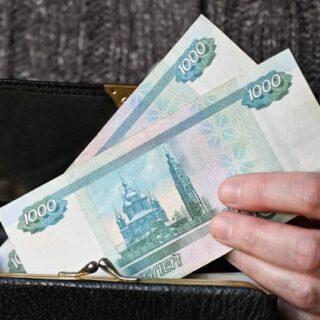
One day at sunset in 2000, the expeditor Vyacheslav Prokhorenko found the remains of a soldier next to the German fortifications on the Sinyavinsky Heights in the Leningrad Region.
Buttonholes of a junior lieutenant, binoculars, a pistol. And in the pocket of the decayed tunic there is a medallion with a note. They unwind a barely surviving note already in the camp.
“The paper is thin, very thin, the letters are barely visible. It was impossible to leave until the morning. The letters would have blurred, and the paper would have dried up and crumbled. They collected lanterns from all the detachments and decided to unfold the note in the dark,” says Ilya Prokofiev, a member of that expedition.
Four hours of tense silence. Lanterns tremble in tired and cold hands. Finally, the note can be unfolded and read: “Hydrat Arkady Antonovich, the city of Gus-Khrustalny, the village of Krasny.”
On the margins of the note that Arkady Gidrat put into his mortal medallion, he wrote to his wife “Live happily!”
“Such is the testament of the beloved. Yes, and all of us, probably,” adds Prokofiev.
The search for data on the fighter begins, the guys send requests to the military registration and enlistment offices and archives. A few months later, it turns out that Arkady Gidrat was a multiple champion of Moscow and a USSR record holder in high jump with a score of 191.5 cm, and he taught at the State Central Institute of Physical Culture.
In 1939, Arkady volunteered for the war with Finland, served in the ski battalion. He returned and began writing his Ph.D. thesis in pedagogy. But didn’t have time to finish it. Again he had to go to war – now the Second World War.
In August 1941, Sergeant Hydrat, as having distinguished himself in battle, was sent to courses for junior commanders “Shot”. Graduates were awarded the rank of junior lieutenant and predicted a great military future. But already in September, a company of cadets under the command of Hydrat rose to death on the Sinyavin Heights, trying to prevent a complete blockade of Leningrad.
“We managed to find the officer’s daughter in Moscow, Olga Arkadyevna Hydrat. We met, and she asked us to go to one place,” says Nikolai Isaev.
“At the Ploshchad Revolutsii metro station, Olga Arkadyevna approached the figure of a guy with a book, put her hand on the sculpture’s boot and quietly said: “Meet my dad,” here Nikolai’s voice breaks off. It’s almost impossible to hold back tears.
To the sculpture, which was sculpted from Arkady Hydrat, his daughter still comes to this day.
“Mom always came with flowers, sat next to the sculpture for a long time and cried. This is the only place where we could come. After all, dad was listed as missing in all the documents. I remember how he put me on his shoulders, and we stood in front of the mirror for a long time … And then dad left, and there was no more news about him,” recalls Olga Gidrat.
In the spring of 2001, the remains of Arkady Hydrat were buried with military honors at the memorial on the Sinyavin Heights. The search engines handed over the personal belongings of the officer to her daughter, she still keeps them as a relic.
Olga worked all her life as a hydrogeologist, raised a son, whom she named Arkady – in honor of her father.
By the way, behind each sculptural image is an absolutely real person.
For example, the dog named “Hindu”, whose owner was border guard Nikita Karatsupa, together they detained Japanese border violators in 1936, became famous throughout the country and became the prototypes of the bronze figure of a border guard with a dog.
Olympy Rudakov became the prototype of the sculpture of a bronze sailor-signalman. According to Oksana Bondarenko, director of the Moscow Transport Museum, in 1953, under the command of Rudakov, the cruiser Sverdlov arrived in Britain to congratulate Elizabeth II on her coronation. By an amazing coincidence, Olympius became the main character of the ball: the queen herself gave him the first round of the waltz, and later introduced him to her sister, Princess Margaret – in her company, the captain of the first rank spent the whole evening.
Cadet of the Leningrad Higher Naval School named after M.V. Frunze Alexei Nikitenko, who later received the title of Hero of the Soviet Union for participation in the war with Japan, became the prototype of a revolutionary sailor…
For those who don’t know, Ploshchad Revolyutsii metro station was designed by architect Alexei Dushkin and opened on March 13, 1938.
The architect Alexei Dushkin himself did not really like the station he built: he wanted to place bas-reliefs on revolutionary themes in the walls of the pylons, but the options that were offered to the architect did not suit him.
Then the leaders of Moscow and the metro decided to place full-sized sculptures in the openings of the arches. Dushkin did not like this option either: it seemed to him that such decorations did not correspond to the architectural image of the station. However, the sculptures were approved by Stalin himself.
Station “Revolution Square” – pylon three-vaulted deep (located at a depth of 34 meters); the length and width of the platform are 155 and 22.5 meters, respectively, the distance between the tracks is 25.4 meters; the height of the vault is 5.3 meters. Hermetic seals were installed at the ends of the station hall, as well as in the passages, so that in case of danger, the underground palace turned into a well-protected bomb shelter in five minutes.
As Aleksey Dushkin later recalled, the general secretary came personally to the opening of the station. Stalin walked around the sculptures and said “as alive, as alive”…
Initially, there were 80 bronze statues, but due to the opening of the eastern ground vestibule in December 1947, four figures had to be dismantled, as well as the bas-relief with images of Lenin and Stalin. That is why out of 20 sculptural scenes 18 are repeated four times, and two – only twice. The bas-relief was moved to the end of the Paveletskaya station on the Circle Line, but in the 1960s the bas-relief was removed from there too: in connection with the fight against Stalin’s personality cult.
Today, many signs and beliefs are associated with the station and its sculptures. So, students believe: if you rub the dog’s nose at the “Border guard with a dog”, then you will pass the exam “excellently”. Negligent students of Bauman University, which is located at the Baumanskaya metro station, which is part of the blue line, studied one ticket the night before the exam, before the exam they came to the Revolution Square station, rubbed the border guard’s dog’s nose and made a wish – to pull out a happy one on the exam ticket.
And if you touch the flag in the hands of the Marat signalman early in the morning, the day will go well. Nagan in the hands of a sailor brings good luck in business. The shoes of a reading student help from unhappy love.
Tour guides in the Moscow metro are asked by the metro staff not to tell tourists why the sculptures need to be rubbed. They say that the molds for casting small parts are completely worn out, the barrel of the revolutionary sailor’s revolver suffers especially, and the compass, which was once in the engineer’s hand, simply ceased to be restored. Now we can see a gear in one hand of the engineer – this is a one-piece cast part of the sculpture, and in the index finger of the other hand there is only a hole into which the compasses were once attached.






